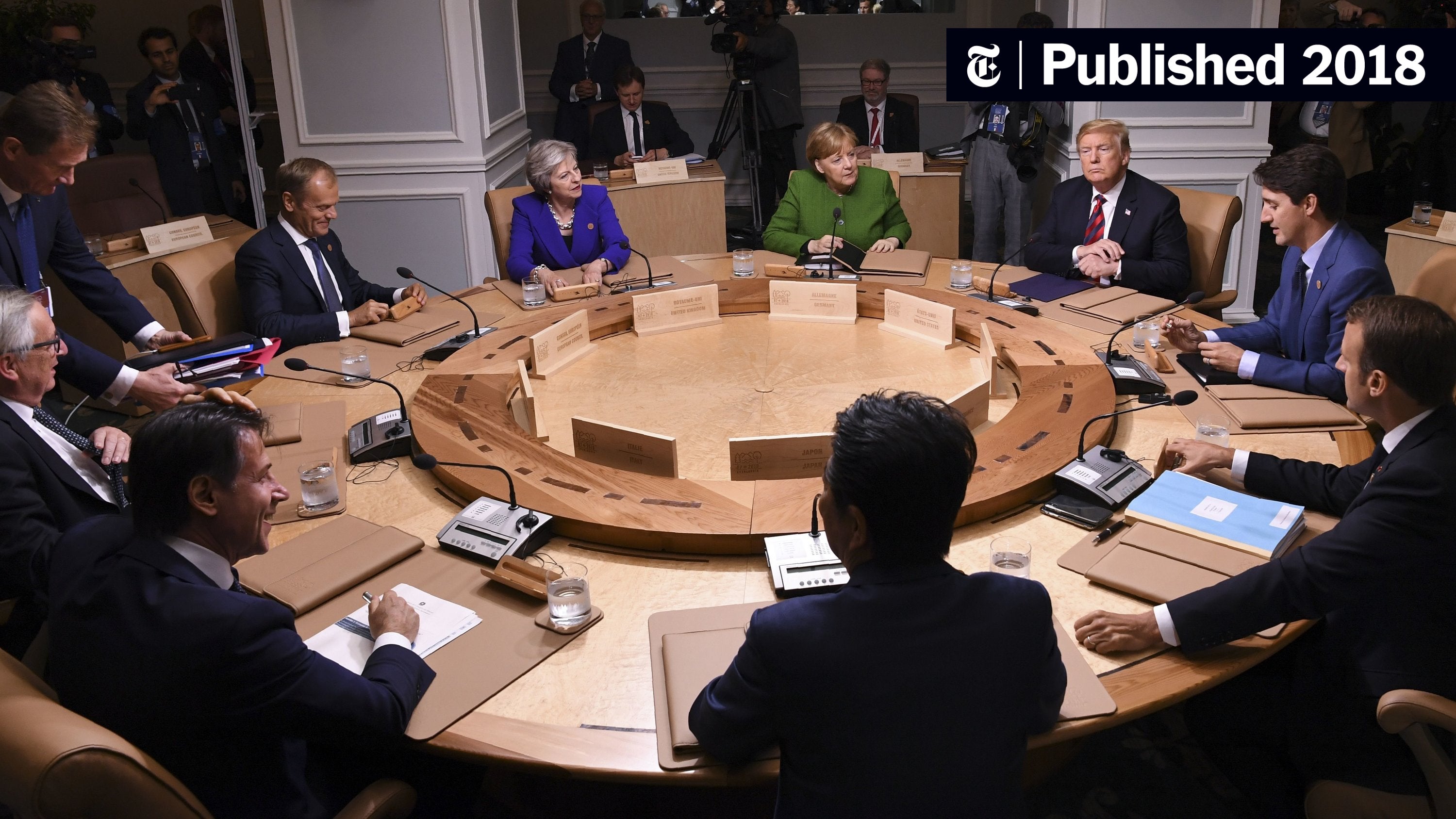Understanding Trump's Aggressive Stance On European Trade

Table of Contents
The Roots of Trump's Protectionist Approach
Trump's aggressive trade policies toward Europe stemmed from a confluence of factors, primarily rooted in his "America First" ideology and concerns about trade imbalances.
"America First" Ideology
The core tenet of Trump's "America First" policy was prioritizing American interests above all else. This translated into trade policy by:
- Reducing trade deficits: A central goal was to shrink the trade deficit with countries like those in the European Union, seen as a sign of American economic weakness.
- Prioritizing domestic industries: Trump aimed to bolster American industries, often at the expense of foreign competition, through tariffs and other protectionist measures.
- Challenging perceived unfair trade practices: The administration frequently accused European nations of engaging in unfair trade practices, justifying retaliatory actions.
Examples of Trump's rhetoric reflecting this ideology are plentiful, including his frequent pronouncements on the unfairness of trade deals and his repeated calls for bringing manufacturing jobs back to the United States.
Concerns about Trade Deficits with Europe
Trump consistently highlighted the US trade deficit with the EU, emphasizing specific sectors:
- Automobiles: The US automotive industry faced stiff competition from European manufacturers, leading to concerns about job losses and market share.
- Steel: The steel industry was another area of focus, with accusations of dumping and unfair competition from European producers.
Data from the US Census Bureau consistently showed a trade deficit with the EU, although the complexities of bilateral trade and the interconnected nature of global supply chains often complicate simple interpretations of these figures.
Allegations of Unfair Trade Practices
Trump's administration frequently leveled accusations of unfair trade practices against European nations, including:
- Subsidies: Claims were made that European governments provided unfair subsidies to their industries, giving them an artificial advantage in the global marketplace.
- Tariffs: Existing European tariffs on certain American goods were seen as barriers to free and fair trade.
- Non-tariff barriers: Regulations and standards in Europe were sometimes viewed as obstacles to American exports.
It's important to note that these allegations were often met with counterarguments from European officials, who pointed to the complexities of international trade and highlighted American trade practices they viewed as equally problematic.
Key Actions and their Impact on European Trade
Trump's administration took several significant actions impacting European trade, leading to reciprocal measures and economic consequences.
Imposition of Tariffs and Trade Wars
The imposition of tariffs on specific European goods was a hallmark of Trump's trade policy:
- Steel and aluminum tariffs: These broad tariffs, imposed in 2018, sparked immediate retaliation from the EU, leading to tit-for-tat tariff increases on various American products.
- Targeted tariffs: Additional tariffs were imposed on specific goods, such as agricultural products and automobiles, further escalating tensions.
These actions led to increased prices for consumers on both sides of the Atlantic, disrupted supply chains, and negatively impacted businesses reliant on transatlantic trade.
Negotiations and Trade Deals
Negotiations and renegotiations of trade agreements between the US and the EU during Trump's presidency were largely unsuccessful:
- TTIP (Transatlantic Trade and Investment Partnership): This ambitious trade agreement, negotiated under the Obama administration, was effectively abandoned under Trump.
- Limited bilateral negotiations: While some attempts at bilateral negotiations occurred, they yielded limited progress due to fundamental disagreements on trade policy approaches.
The lack of meaningful progress in trade negotiations contributed to the overall deterioration of US-EU relations.
Impact on Specific Industries
Trump's policies had varied impacts on specific European industries:
- Agriculture: European agricultural exporters faced significant challenges due to American tariffs.
- Manufacturing: The automotive and steel industries were particularly hard hit by the tariff war.
- Overall economy: The uncertainty created by Trump’s trade policies negatively impacted overall economic growth and investment.
Long-Term Implications of Trump's Trade Stance
Trump's aggressive trade policies had far-reaching consequences extending beyond immediate economic impacts.
Damage to Transatlantic Relations
The trade disputes significantly damaged the US-EU relationship:
- Deterioration of diplomatic ties: Trust and cooperation between the two major economic blocs suffered as a result of the trade war.
- Reduced cooperation on global issues: The strained relationship made it harder to address shared challenges such as climate change and security issues.
Repairing this damage will require sustained effort and a commitment to restoring mutual trust and respect.
Rise of Protectionism Globally
Trump's actions fueled a broader trend towards protectionism globally:
- Increased trade barriers: Other countries followed suit, imposing their own trade barriers, creating a more fragmented and protectionist global trading system.
- Economic uncertainty: This rise of protectionism increased global economic uncertainty and slowed down trade growth.
Shifting Global Trade Dynamics
Trump's policies may have long-term consequences for global trade patterns:
- Diversification of trade partners: European businesses may seek new trading partners outside the US.
- Regional trade agreements: Increased focus on regional trade agreements, rather than multilateral ones, is a potential outcome.
Conclusion: Understanding the Lasting Legacy of Trump's European Trade Policies
Trump's aggressive stance on European trade, driven by his "America First" ideology, concerns about trade deficits, and accusations of unfair trade practices, resulted in a period of heightened trade tensions and significant economic consequences. The imposition of tariffs triggered retaliatory measures, damaging the transatlantic relationship and contributing to a broader rise in global protectionism. Understanding these policies and their lasting impact is crucial for comprehending current geopolitical and economic dynamics. To stay informed about evolving US-EU trade relations and the future of global trade, further research into relevant publications, think tank reports, and academic analyses is highly recommended. Continue to engage in discussions about the complexities of international trade and the impact of protectionist policies. The legacy of Trump’s aggressive stance on European trade continues to shape the global economic landscape.

Featured Posts
-
 Monaco Grand Prix Fp 1 Leclerc On Top Verstappens Challenge
May 26, 2025
Monaco Grand Prix Fp 1 Leclerc On Top Verstappens Challenge
May 26, 2025 -
 Grand Slam Debut Alex Eala Set To Play In Paris
May 26, 2025
Grand Slam Debut Alex Eala Set To Play In Paris
May 26, 2025 -
 Watch The Saint Itv 4 Tv Listings And Showtimes
May 26, 2025
Watch The Saint Itv 4 Tv Listings And Showtimes
May 26, 2025 -
 Your Guide To The 5 Most Intense Lock Up Action Episodes
May 26, 2025
Your Guide To The 5 Most Intense Lock Up Action Episodes
May 26, 2025 -
 Mercedes F1 Wolffs Cryptic Remarks On Russells Future
May 26, 2025
Mercedes F1 Wolffs Cryptic Remarks On Russells Future
May 26, 2025
